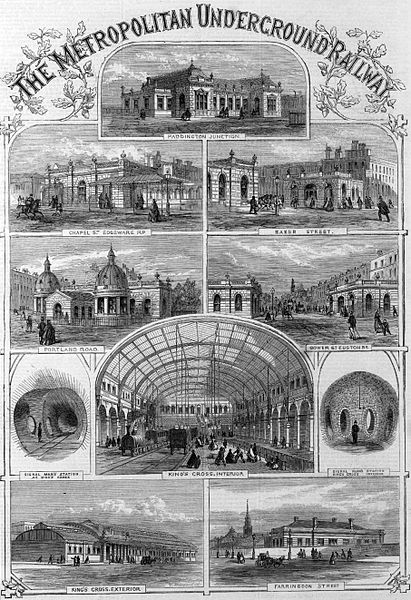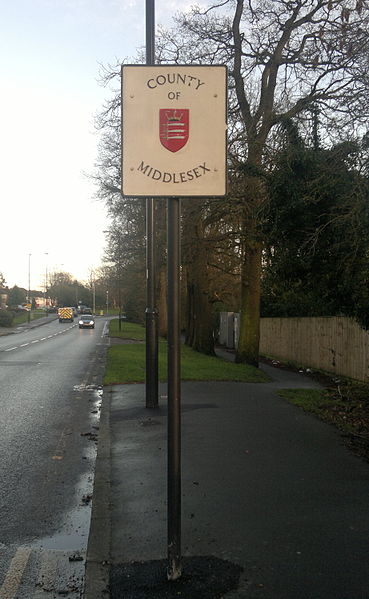The Metropolitan Railway was a passenger and goods railway that served London from 1863 to 1933, its main line heading north-west from the capital's financial heart in the City to what were to become the Middlesex suburbs. Its first line connected the main-line railway termini at Paddington, Euston, and King's Cross to the City. The first section was built beneath the New Road using cut-and-cover between Paddington and King's Cross and in tunnel and cuttings beside Farringdon Road from King's Cross to near Smithfield, near the City. It opened to the public on 10 January 1863 with gas-lit wooden carriages hauled by steam locomotives, the world's first passenger-carrying designated underground railway.
Montage of the Metropolitan Railway's stations from The Illustrated London News December 1862, the month before the railway opened
Construction of the Metropolitan Railway close to King's Cross station in 1861
The cutting at Farringdon following the flooding from the Fleet sewer in June 1862
Metropolitan Railway A-Class 4-4-0T No 23 in Covent Garden
Middlesex was a county in southeast England. Its area was almost entirely within the wider urbanised area of London and mostly within the ceremonial county of Greater London, with small sections in neighbouring ceremonial counties. The county's boundaries largely followed three rivers: the Thames in the south, the Lea to the east and the Colne to the west. A line of hills formed the northern boundary with Hertfordshire.
Middlesex as part of the Diocese of London in 1714. The diocese was based on the East Saxon kingdom, and was probably originally larger than shown here.
The Middlesex Guildhall at Westminster, which now houses the Supreme Court of the United Kingdom.
Coats of arms of Middlesex (left) and Buckinghamshire (right) in stained glass at the exit from Uxbridge tube station.
County of Middlesex sign in 2014, on the border between the London Boroughs of Barnet and Enfield.








